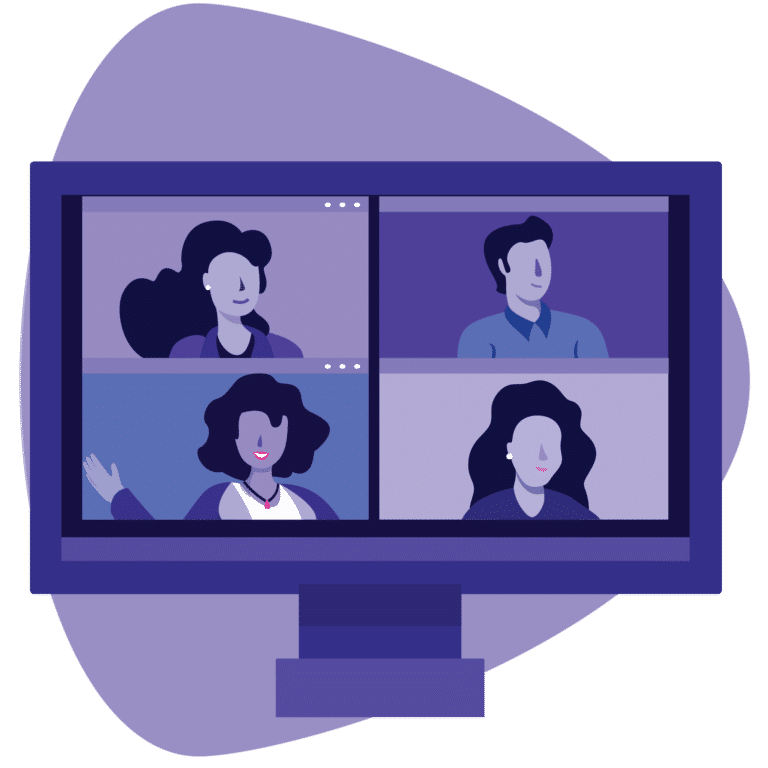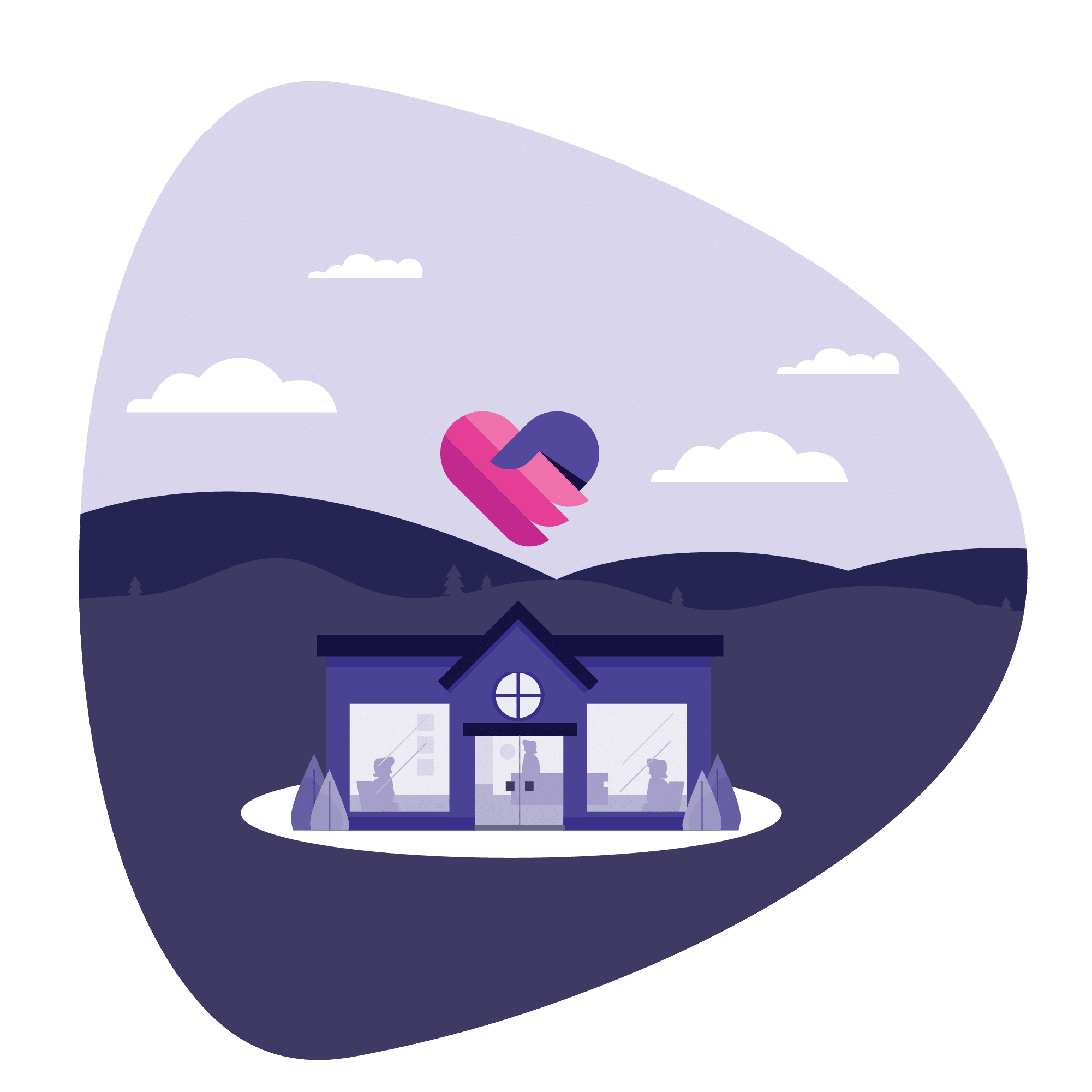In a webinar hosted by Iris Telehealth Chief Medical Officer, Dr. Thomas Milam, Beth Engelhorn, Executive Director of Southside Behavioral Health in South Central Virginia and Iris provider Dale McQueeney, PMHNP, shared how virtual services can help optimize care delivery for patients experiencing substance use disorders (SUDs).
This blog breaks down the core takeaways of that webinar to look at the current state of the opioid epidemic and the role of virtual MAT programs in the crisis.
The leading percentage of overdoses derive from illegally made fentanyl
For decades now, communities across the U.S. have grappled with the opioid epidemic, which saw a significant increase between 1999 and 2010, reaching a stable trend between 2010 and 2020.
According to the Centers for Disease Control and Prevention (CDC), the leading percentage of overdoses derives from illegally made fentanyl with no other opioids or stimulants — closely followed by illegally made fentanyl mixed with cocaine and illegally made fentanyl with methamphetamine.
Access to Medication Assisted Treatment (MAT) services that support these patients is critical.
Patients with opioid use disorder (OUD) may experience challenges related to social determinants of health on their path to recovery
Dale McQueeney, PMHNP, has been with Iris Telehealth for four years and works with the Center for Human Development in rural eastern Oregon, serving as the primary provider for their MAT program and their Associate Medical Director for substance use disorder treatment.
According to Dale, patients experiencing OUD may encounter the following challenges in their journey to recovery:
- Homelessness
- Food insecurity
- Unemployment
- Lack of regular healthcare
These individuals need a lot of support and require a team of professionals to help them get the care they need, whether that’s dedicated certified recovery mentors, case managers, or a SUD team.
The role of Medication Assisted Treatment in delivering life-saving care
MAT programs engage patients in whole-person care that helps treat OUD by helping normalize brain chemistry, block the euphoric effects of opioids, and relieve physical cravings.
The benefits of MAT:
- Decreases opioid-related overdose deaths
- Decreases illicit opioid use and criminal activity
- Increases social functioning and retention in treatment
- Decreases transmission of infectious disease (HIV and Hep C)
- Improves maternal and fetal outcomes for pregnant or breastfeeding women
At Southside Behavioral Health, offering access to virtual MAT services is essential to effective whole-patient care
Southside Behavioral Health is a community service board that provides community mental health care across rural South Central Virigina.
They serve approximately 3,000 people —including through their MAT program, which heavily leverages virtual care due to the shortage of local providers who can deliver these services.
Beth Engelhorn, Executive Director, Southside Behavioral Health
We offer MAT services hand-in-glove with our other services. If someone walks in the door, we do a comprehensive needs assessment and figure out everything they need.
If they want treatment for OUD, we send them to our nurse practitioner that prescribes all other mental health medication. We recently hired an Iris psychiatrist who helps us with that, and we consider it as part of the treatment continuum within the agency and don’t differentiate between that and anything else someone comes in for.
In addition to virtual providers, Southside also has specialized staff who treat SUDs and focus on whole-person care. They work with the person on their goals, and they choose their own course of treatment.
Good care starts with comprehensive assessments, informative screenings, and a non-judgmental approach
Beth’s care team at Southside conducts comprehensive assessments to figure out each patient’s needs.
Beth Engelhorn, Executive Director, Southside Behavioral Health
Our team is really good at working through all the assessments and why they need to be done. We are a grant funded program in regard to our MAT, so we’re required to have patients fill out an additional assessment that has to be done.
We make it a reward – if they complete the form, they get a gift card. We as a team work really hard to make sure the person feels heard and that they know they’re not just a number or a piece of data.
Most Southside patients receive virtual care directly in their clinics due to bandwidth limitations in their rural communities. At their first MAT appointment, Southside staff will have patients take a drug screening – with subsequent screenings happening at provider discretion as patients continue their treatment.
The results of these screenings help the provider have a conversation with the patient about how it could affect their treatment, safety, and provide information to help the individual decide how they want to proceed.
From the providers perspective, Dale says that she’s rarely surprised to learn what shows up in a drug screen. She says communication is key and she lets her patients know that she won’t stop prescribing to them if they tell her what they’re using.
Dale says the information she gains about her patients provides guidance into how to support them.
Reducing barriers to care and reducing stigma are keys to quality treatment
Dale schedules each patient’s first visit to take place over video at the clinic whenever possible, so she and the patient can make eye contact and the team can conduct the initial drug screening.
However, to reduce as many barriers to care as possible, Dale holds subsequent appointments over the phone or over video from the patient’s home if it’s harder for them to come into the office.
During her visits with patients, Dale is also mindful of the stigma patients may experience day-to-day.
A study by the Cohen Veterans Network found that 31% of Americans have worried others judging them when telling someone they’ve sought behavioral health services. The report states that 21% have lied about getting care.
Ensuring patients can get quality care in a judgement-free space is crucial to their well-being and recovery.
Life-saving medications keep patients alive and are an important part of a harm-reduction approach
Dale shares that it’s very common for her patients to use substances outside of buprenorphine – like methamphetamine and cannabis. If she knows they’re going to be using methamphetamines, she recommends using fentanyl testing strips as a part of a harm-reduction approach.
Dale also shares other techniques she uses with her patients, including motivational interviewing.
Dale McQueeney, PMHNP, Iris Telehealth Provider
I do use a lot of motivational interviewing. I grab onto those little kernels, that little bit of hope, and I hope for them. I say things like, ‘I’m trying to keep you alive. I think you’re worth being here.’
And because they are – all of my patients are worth being here. I find those little things – there’s always something that you can grab onto.
At Southside, Beth says they’ve had to provide a lot of training to move their providers towards a harm-reduction approach and lean on collaboration to help provide holistic for their patients.
Beth Engelhorn, Executive Director, Southside Behavioral Health
We offer people harm reduction kits where we give out fentanyl strips, syringes, and whatever someone needs to keep themselves safe.
We talk to them about their increased risk to their general health and it becomes a place of dialogue. We let their therapist know they tested positive for cocaine and amphetamines and the nurse practitioner reads my notes and we have a conversation about shared client. I appreciate the team approach – we share concern for their health and safety.
Virtual care helps bring addiction treatment to rural areas
The behavioral health provider shortage has hit many communities hard – especially those in rural parts of the country. According to the Health Resources & Services Administration, there are 122 million people living in Health Professional Shortage Areas (HPSAs).
That makes sourcing behavioral health providers even more challenging for those living in rural areas. However, with telehealth, these communities can access specialists they otherwise wouldn’t be able to recruit.
Beth Engelhorn, Executive Director, Southside Behavioral Health
Virtual care has allowed us to bring in professionals, psychiatrists, nurse practitioners, therapists, where we wouldn’t be able to have them in our area at all. Our MAT program would probably not exist if we didn’t have virtual care.
It has actually allowed us to bring this to our community and let it grow. And not only that, to have really competent, talented people ready to provide those services.
Behavioral health providers like Dale, whose focus is on treating those with dual diagnoses and prescribing medication for addiction treatment, creates rich connections with her patients in Oregon, even while living in Maine.
Dale McQueeney, PMHNP, Iris Telehealth Provider
I want to emphasize the power of telehealth. I live in Maine and became aware of how devastated New England has been by the opioid epidemic. And then I learned how other regions of the country were similarly affected. Now through Iris Telehealth, I have the ability to use my skills and education to serve the people of rural Eastern Oregon. That’s all because of the power of telehealth.
About Iris
If you’d like to learn more about Iris and our MAT services, please contact us today!
You can also click here to watch the full conversation with Beth, Dale, and Dr. Milam.




